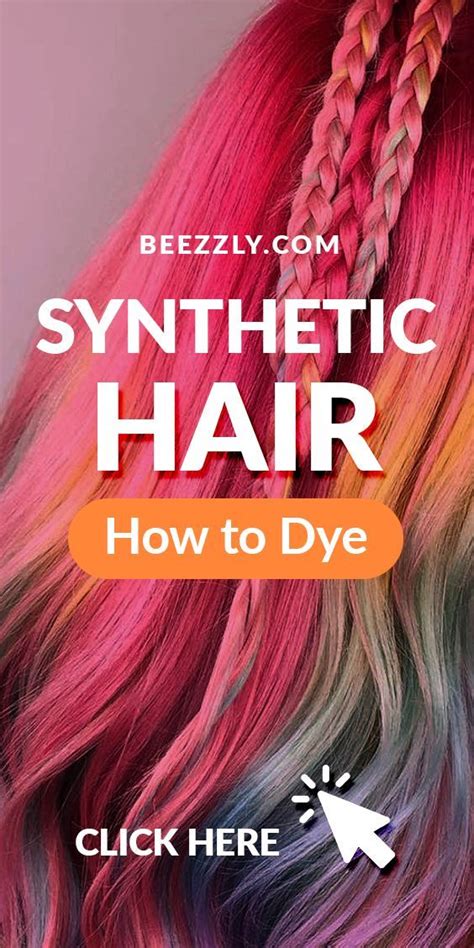Introduction
Hair dyeing has been a part of human culture for centuries, with ancient civilizations using natural dyes derived from plants, minerals, and even insects. However, the advent of synthetic hair dyes in the 20th century revolutionized the industry, providing vibrant, long-lasting colors that could transform hair into a kaleidoscope of hues.

Today, synthetic hair dyes are ubiquitous in the beauty industry, used by millions worldwide to express their individuality and enhance their appearance. This article delves into the fascinating world of synthetic hair dyes, exploring their history, chemistry, safety, and the latest innovations driving this rapidly growing market.
Chemistry of Synthetic Hair Dyes
Synthetic hair dyes are organic compounds that contain a chromophore, a group of atoms that absorb light of a specific wavelength. When light strikes the chromophore, it absorbs energy and promotes electrons to a higher energy level. When the electrons return to their original energy level, they release energy in the form of visible light, giving the dye its color.
The two main classes of synthetic hair dyes are permanent and semi-permanent. Permanent hair dyes contain ammonia, which opens up the hair cuticle and allows the dye molecules to penetrate the hair shaft. This results in a permanent change in hair color that will not wash out. Semi-permanent hair dyes, on the other hand, do not contain ammonia and only penetrate the outer layer of the hair shaft. They do not permanently change the hair’s color and will fade gradually over time with washing.
Safety of Synthetic Hair Dyes
The safety of synthetic hair dyes has been a subject of ongoing debate for decades. Some dyes have been linked to allergic reactions, skin irritation, and even cancer. However, it’s important to note that the vast majority of synthetic hair dyes are safe for use when used according to the manufacturer’s instructions.
In the United States, the Food and Drug Administration (FDA) regulates the use of hair dyes. The FDA requires that all hair dyes undergo extensive safety testing before being marketed to consumers. The FDA also monitors hair dye products for potential safety concerns and takes action if any risks are identified.
According to the International Agency for Research on Cancer (IARC), a part of the World Health Organization (WHO), there is “limited evidence” that some hair dyes may cause cancer in humans. However, the IARC also notes that the evidence is inconclusive and more research is needed.
The Global Hair Dye Market
The global hair dye market is a multi-billion dollar industry that continues to grow steadily. According to Statista, the global hair dye market was valued at $41.7 billion in 2022 and is projected to reach $47.8 billion by 2027.
The Asia-Pacific region is the largest market for hair dyes, accounting for over 40% of global sales. The United States is the second largest market, followed by Europe. The growing popularity of hair dyeing in emerging markets, such as China and India, is driving the growth of the global market.
Innovations in Synthetic Hair Dye Technology
The synthetic hair dye market is constantly evolving, with new technologies and products emerging to meet the changing needs of consumers. Some of the latest innovations in synthetic hair dye technology include:
- Color-correcting hair dyes: These dyes are designed to correct unwanted tones in hair, such as brassiness or yellowing.
- Low-ammonia hair dyes: These dyes contain less ammonia than traditional permanent hair dyes, which can reduce the risk of hair damage and irritation.
- Natural hair dyes: These dyes are made with plant-based ingredients and are free of harsh chemicals.
- Direct hair dyes: These dyes do not require a developer and can be applied directly to the hair. They are ideal for semi-permanent hair color changes.
Conclusion
Synthetic hair dyes have revolutionized the beauty industry, providing vibrant, long-lasting colors that can transform hair into a work of art. While some concerns have been raised about their safety, the vast majority of synthetic hair dyes are safe for use when used according to the manufacturer’s instructions.
The global hair dye market is growing steadily, driven by the increasing popularity of hair dyeing in emerging markets. New innovations in synthetic hair dye technology are constantly emerging, meeting the changing needs of consumers and pushing the boundaries of color expression.
